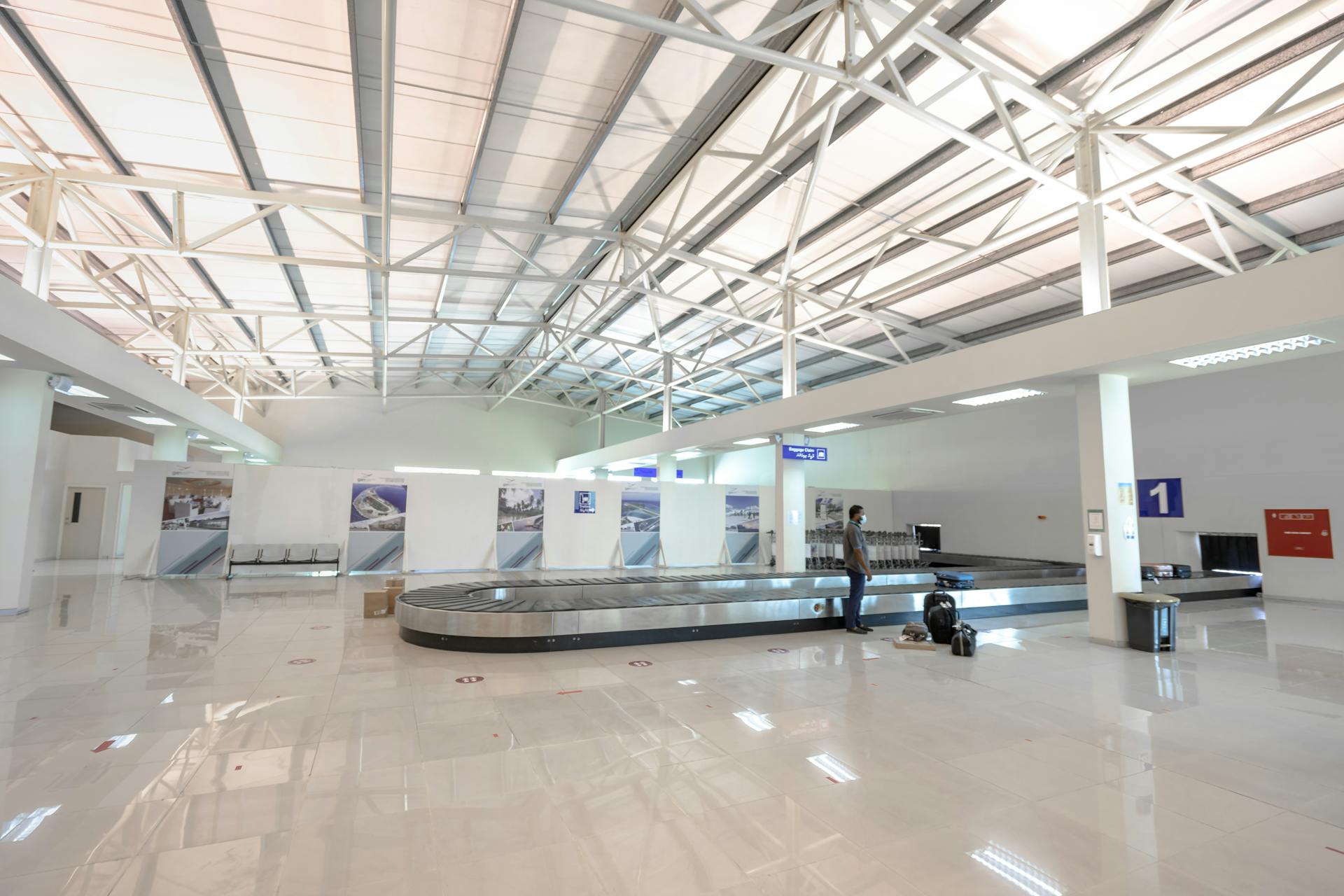
If you've experienced poor workmanship on a project, you might be wondering if you can file an insurance claim.
Poor workmanship insurance claims are usually covered under a builder's risk policy, also known as a construction risk policy.
This type of policy is designed to protect against unexpected events, including poor workmanship, that can delay or disrupt a project.
A builder's risk policy typically covers damage to the project itself, as well as any consequential losses, such as lost profits or additional costs.
Policy Exclusions
Policy exclusions are a crucial aspect of insurance policies that you need to understand before filing a claim for poor workmanship. Your policy won't cover damage to the specific part of a building you're working on, even if you have the right coverage for the property.
Even if you have the appropriate coverage for a property undergoing renovation, your policy will exclude damage to the specific part of the building you're working on. This is to avoid an overlap of coverages with the contractor's insurance policies.
A different take: Storm Damage Insurance Claim
Damage to property you're working on is excluded, and this includes accidental damage caused by faulty workmanship. For example, if you're an electrical contractor and accidentally start a fire while working on an electrical panel, your policy won't cover the damage to the panel.
Damage to your own work is also excluded, unless it was performed by a subcontractor you hired. For instance, if you operate a masonry business and hire a subcontractor to construct a brick wall, but the wall collapses due to shoddy work, your policy might cover the property damage claim.
Your policy won't cover the cost of redoing faulty work, which means you'll have to pay out of pocket to repair or replace the damaged work. This is a common exclusion in liability insurance policies.
The exclusions in your policy may vary, so it's essential to check your policy for language specific to your covered property.
What Can This Damage Cost?
Injuries from construction work can be severe, and lawsuits can fly in every direction. This can include lawsuits against the owner of the property.
Using power tools, including nail guns and saws, can be quite risky, and accidents can happen. Improper construction of a deck can severely injure future tenants and their guests.
Careless soldering techniques can start a fire that burns the whole building. An accident can take someone's life.
If your work is faulty, your policy won't cover claims demanding you repair or replace it.
A fresh viewpoint: Construction Business Insurance Cost
Self-Protection and Requirements
To protect yourself from poor workmanship, it's essential to hire a contractor who is properly licensed and insured. Hiring someone who isn't licensed and insured can ultimately hurt your business more than paying more for labor.
Make sure your contractor has the correct license for their type of work. This can vary by state, with different types of licenses certifying a contractor's qualifications in a given discipline.
See what others are reading: Payment Terms for Contractors
You should also require your contractor to procure any necessary permits. Each city's ordinances vary, but permits can cover exterior painting, roof repairs, and much more. If your contractor is caught without the appropriate permits, any fines could come back on you as the owner.
Obtain a copy of all liability policies in force and have your contractor add you or your business as an additional insured/certificate holder during your project. This can give you some protection if you are named in a lawsuit and generally doesn't cost extra.
Intriguing read: Self Employed Contractor Liability Insurance
Self-Protection
Hiring a contractor can be a daunting task, but there are steps you can take to protect yourself and your business. First and foremost, make sure your contractor has the correct license for their type of work, as this can vary by state and discipline.
Many states have different types of licenses, such as specialized training and designations for plumbers and electricians. This ensures that your contractor has the necessary qualifications for the job.

Be sure to check if your contractor has obtained any necessary permits, as fines can be costly and even worse consequences can occur if structural elements fail. Each city's ordinances vary, but permits can cover exterior painting, roof repairs, and more.
Obtain a copy of all liability policies in force and require your contractor to add you or your business as an additional insured/certificate holder during the project. This can give you some protection if you're named in a lawsuit and generally doesn't cost extra.
It's also essential to have your contractor guarantee their work for a reasonable period of time after the job is done, such as 12 months. This can provide peace of mind and protection for your business.
Consider reading: Business Insurance Claim
Requirements for Coverage
To have faulty work claims covered under a general liability policy, several requirements must be satisfied. This can be a complex and time-consuming process, but understanding these requirements can help you protect yourself and your business.

In order for a faulty work claim to be covered, the contractor's work must be considered an "occurrence", which is defined as an accident, including continuous or repeated exposure to substantially the same general harmful conditions.
Having a clear understanding of what constitutes an "occurrence" can help you determine whether your faulty work claim is covered. This can be a crucial distinction, as it can affect the outcome of your claim and the financial implications for your business.
Contractors who hire subcontractors may be eligible for coverage under a general liability policy, even if the subcontractor's work is shoddy. This exception to Exclusion L can provide peace of mind and financial protection for contractors who rely on subcontractors to complete their projects.
If you're a contractor who hires subcontractors, it's essential to review your general liability policy and understand the requirements for coverage. This can help you identify potential risks and take steps to mitigate them.
Expand your knowledge: Insurance Claim Help
Key Concepts
A faulty work claim occurs when a customer alleges that the contractor did a poor job, their work didn’t meet industry standards, or did not perform the quality or kind of stated in the contract.
To be covered under your liability policy, a faulty work claim must allege bodily injury or property damage resulting from an occurrence or accident.
Contractors can protect themselves from claims based on mistakes, negligence, errors, and omissions by buying contractors errors and omissions insurance.
Suggestion: How Does a Home Insurance Claim Work
Insurance Coverage
Insurance coverage for poor workmanship can be a complex issue, but it's essential to understand the basics. In the United States, most states agree that Commercial General Liability (CGL) policies were designed to cover various types of claims, including accidents and property damage.
However, the question of whether CGL covers poor workmanship has been a topic of debate. In West Virginia, for instance, there was no coverage for poor workmanship under CGL for over 15 years, but the law has since changed.
A key factor in determining insurance coverage for poor workmanship is the definition of an "occurrence" in the CGL policy. An occurrence is defined as an accident, including continuous or repeated exposure to substantially the same general harmful conditions. The policy doesn't further define the term "accident."
Exclusion L in the CGL policy states that coverage for poor workmanship does not apply to a contractor's work after the work is finished and has been delivered to the property owner's possession. This is consistent with the doctrine of business risk, which says that a business must bear the risk that it will have to replace or repair defective work to meet contractual requirements.
However, there is an exception to Exclusion L: it does not apply to subcontractors. This means that if you hired a subcontractor to do some of the work on a project and the work is shoddy and the property owner sues you, your CGL policy will cover you.
Here are some key takeaways about insurance coverage for poor workmanship:
- CGL policies were designed to cover various types of claims, including accidents and property damage.
- Exclusion L in the CGL policy excludes coverage for poor workmanship after the work is finished and delivered to the property owner's possession.
- However, Exclusion L does not apply to subcontractors.
Damage Types
Damage to a home's foundation can lead to costly repairs, with the average cost ranging from $5,000 to $10,000.
Water damage is a common issue, often caused by poor installation of roofing materials, which can lead to leaks and subsequent damage to walls, floors, and ceilings. The article notes that a single roof leak can cost up to $1,000 to repair.
Poor workmanship can also result in electrical fires, which can be devastating and expensive to fix, with costs ranging from $10,000 to $50,000 or more.
Property Damage
Property damage is a crucial aspect of understanding what's covered and what's not in your insurance policy.
Accidental damage to a specific part of a building you're working on is typically not covered by your policy. For example, if you're an electrical contractor and you accidentally start a fire that destroys the electrical panel you're installing, your insurer won't cover the loss.
This can be a costly mistake, especially if the property owner demands compensation for the damage.
On a similar theme: Not at Fault Insurance Claim
Completed Work Damage

Completed work damage is a significant risk for contractors. This type of damage can result from faulty workmanship, such as using the wrong type of mortar, which can cause a brick wall to collapse.
If a contractor's completed work sustains property damage, their liability policy won't cover the damage. This means that if a homeowner demands that a contractor redo a faulty wall or pay for hiring another contractor, the claim won't be covered.
Contractors can protect themselves from faulty work claims by eliminating coverage gaps in their liability insurance. Practicing good quality control is also essential to prevent completed work damage.
Promptly notifying their insurer of any claims is crucial for contractors to ensure they are covered in case of faulty workmanship.
Frequently Asked Questions
What is an example of faulty workmanship?
An example of faulty workmanship is using low-grade materials, such as poor quality concrete or inferior lumber, which can lead to structural weaknesses or premature deterioration
Sources
- https://nreig.com/is-it-covered-contractors-injuries-workmanship/
- https://www.thebalancemoney.com/claims-for-faulty-work-are-they-covered-462608
- https://www.policyholderpulse.com/faulty-workmanship-insurance-pennsylvania/
- https://www.handl.com/cgl-for-poor-workmanship-business-covered/
- https://rawle.com/reports-articles/rawles-reports-volume-16-number-6/
Featured Images: pexels.com


